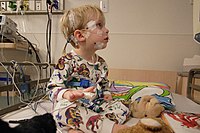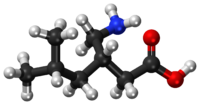
Sleep architecture in drug‐naïve adult patients with epilepsy: Comparison between focal and generalized epilepsy
Sign Up to like & getrecommendations! Published in 2022 at "Epilepsia Open"
DOI: 10.1002/epi4.12687
Abstract: Sleep impairment is one of the most common comorbidities affecting people with epilepsy (PWE). The bidirectional relation between epilepsy and sleep has been widely established. Several studies investigated subjective sleep quality and daytime vigilance in… read more here.
Keywords: architecture drug; epilepsy sleep; sleep architecture; drug adult ... See more keywords

Analysis of the effect of brexpiprazole on sleep architecture in patients with schizophrenia: A preliminary study
Sign Up to like & getrecommendations! Published in 2023 at "Neuropsychopharmacology Reports"
DOI: 10.1002/npr2.12317
Abstract: Brexpiprazole is an atypical antipsychotic drug widely used in Japan for the treatment of schizophrenia. Previous studies have investigated the therapeutic effects of some antipsychotics on sleep variables; however, to our knowledge, the effects of… read more here.
Keywords: brexpiprazole sleep; effect brexpiprazole; patients schizophrenia; sleep architecture ... See more keywords

Developmental changes in obstructive sleep apnea and sleep architecture in Down syndrome.
Sign Up to like & getrecommendations! Published in 2023 at "Pediatric pulmonology"
DOI: 10.1002/ppul.26405
Abstract: BACKGROUND Down syndrome (DS, also known as Trisomy 21) is a condition associated with abnormal neurodevelopment and a higher risk for sleep apnea. Our study sought to better understand and characterize the age-related developmental differences… read more here.
Keywords: developmental changes; sleep apnea; sleep architecture; obstructive sleep ... See more keywords

Sleep architecture of short sleep time in patients with obstructive sleep apnea: a retrospective single-facility study
Sign Up to like & getrecommendations! Published in 2021 at "Sleep and Breathing"
DOI: 10.1007/s11325-021-02533-7
Abstract: Sleep architecture consists of rapid eye movement (REM) sleep and non-REM sleep time. Non-REM sleep time is further classified into three stages by depth (stage N1–N3). Some studies have reported that short sleep time predicts… read more here.
Keywords: short sleep; sleep architecture; sleep time; time ... See more keywords

Sleep architecture in adults with epilepsy: a systematic review.
Sign Up to like & getrecommendations! Published in 2019 at "Sleep medicine"
DOI: 10.1016/j.sleep.2018.09.004
Abstract: OBJECTIVES To assess whether sleep architecture differs in subgroups of adults with epilepsy or in adults with epilepsy compared to control populations. METHODS We completed a systematic review of papers published in two databases up… read more here.
Keywords: adults epilepsy; systematic review; architecture adults; review ... See more keywords

Sleep manifestations, sleep architecture in children with Eosinophilic esophagitis presenting to a sleep clinic.
Sign Up to like & getrecommendations! Published in 2019 at "Sleep medicine"
DOI: 10.1016/j.sleep.2019.08.018
Abstract: STUDY OBJECTIVES To describe sleep manifestations, polysomnographic (PSG) findings, and specific sleep disorders in children with Eosinophilic Esophagitis (EoE). METHODS This retrospective study included children with EoE who were referred to sleep clinics. Clinical manifestations,… read more here.
Keywords: sleep manifestations; sleep architecture; children eoe; eoe ... See more keywords

Nighttime melatonin secretion and sleep architecture: different associations in perimenopausal and postmenopausal women.
Sign Up to like & getrecommendations! Published in 2021 at "Sleep medicine"
DOI: 10.1016/j.sleep.2021.02.011
Abstract: BACKGROUND Sleep quality typically decreases after menopause, but the underlying mechanisms are poorly understood. Concentrations of melatonin are lower and its secretion profiles different before and after menopause. However, whether and how melatonin and sleep… read more here.
Keywords: secretion; perimenopausal postmenopausal; melatonin; sleep architecture ... See more keywords

The effect of acute alcohol ingestion on systemic hemodynamics and sleep architecture in young, healthy men
Sign Up to like & getrecommendations! Published in 2020 at "Journal of American College Health"
DOI: 10.1080/07448481.2020.1756826
Abstract: Abstract Objective Heightened nocturnal blood pressure (BP) may be attributed to the disruption of sleep, a condition worsened by alcohol ingestion. This study investigated the effects of acute alcohol ingestion on hemodynamics and sleep architecture… read more here.
Keywords: sleep architecture; acute alcohol; hemodynamics; ingestion ... See more keywords

L-Tryptophan As Treatment for Pediatric Non-Rapid Eye Movement Parasomnia.
Sign Up to like & getrecommendations! Published in 2018 at "Journal of child and adolescent psychopharmacology"
DOI: 10.1089/cap.2017.0164
Abstract: OBJECTIVE Parasomnias are common in childhood but there is no established treatment for parasomnias. The aim of this study was to (1) report on the outcome of using L-tryptophan to manage parasomnias in children and… read more here.
Keywords: tryptophan treatment; sleep architecture; treatment; parasomnias children ... See more keywords

0319 Sleep Architecture and Neurocognitive and Behavioral Functioning in Youth from the General Population
Sign Up to like & getrecommendations! Published in 2020 at "Sleep"
DOI: 10.1093/sleep/zsaa056.316
Abstract: The transition from childhood to adolescence is critical for the onset of psychopathology and reflects significant changes in the sleeping brain. Sleep deprivation studies have shown that rapid eye movement (REM) and non-rapid eye movement… read more here.
Keywords: neurocognitive behavioral; nrem sleep; architecture neurocognitive; sleep architecture ... See more keywords

Sleep architecture based on sleep depth and propensity: patterns in different demographics and sleep disorders and association with health outcomes
Sign Up to like & getrecommendations! Published in 2022 at "Sleep"
DOI: 10.1093/sleep/zsac059
Abstract: Abstract Study Objectives Conventional metrics of sleep quantity/depth have serious shortcomings. Odds-Ratio-Product (ORP) is a continuous metric of sleep depth ranging from 0 (very deep sleep) to 2.5 (full-wakefulness). We describe an ORP-based approach that… read more here.
Keywords: health; sleep depth; sleep architecture; sleep disorders ... See more keywords